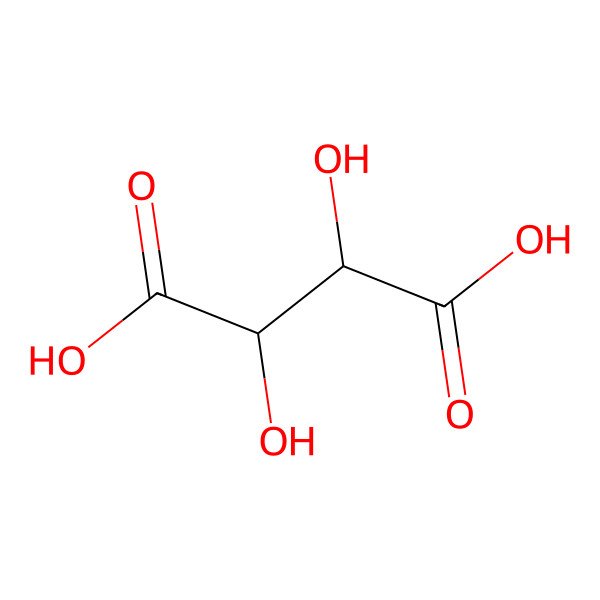| DL-Tartaric acid |
| tartaric acid |
| 2,3-Dihydroxybutanedioic acid |
| 526-83-0 |
| 133-37-9 |
| Racemic acid |
| Uvic acid |
| Traubensaure |
| Racemic tartaric acid |
| DL-Tartrate |
| Paratartaric acid |
| Paratartaric aicd |
| BUTANEDIOIC ACID, 2,3-DIHYDROXY- |
| Resolvable tartaric acid |
| NSC62778 |
| Tartaric acid D,L |
| Baros |
| CHEBI:15674 |
| dl-2,3-dihydroxybutanedioic acid |
| (2RS,3RS)-Tartaric acid |
| tartrate |
| NSC 148314 |
| Tartaric acid, L-(+)- |
| 2,3-dihydroxy-succinic acid |
| C4H6O6 |
| Butanedioic acid, 2,3-dihydroxy-(R*,R*)-(.+/-.)- |
| Butanedioic acid, 2,3-dihydroxy-, (R*,R*)- |
| E-7050 (2S,3S)-2,3-dihydroxysuccinic acid |
| 868-14-4 |
| (.+-.)-Tartaric acid |
| 1007601-97-9 |
| Tartaric acid (VAN) |
| Kyselina vinna [Czech] |
| NSC155080 |
| Tartaric acid [USAN:JAN] |
| 2,3-Dihydrosuccinic acid |
| DTXSID5046986 |
| d-alpha,beta-Dihydroxysuccinic acid |
| NSC-148314 |
| Kyselina 2,3-dihydroxybutandiova [Czech] |
| (+) tartaric acid |
| (-) tartaric acid |
| 1,2-dicarboxylic acid |
| WLN: QVYQYQVQ |
| (-) D-Tartaric acid |
| Sal tartar (Salt/Mix) |
| Tartaric acid, (DL)- |
| Butanedioic acid, 2,3-dihydroxy- (R-(R*,R*))- |
| Butanedioic acid, 2,3-dihydroxy-, [S-(R*,R*)]- |
| Malic acid, 3-hydroxy- |
| 2,3-Dihydroxysuccinicacid |
| Succinic acid,3-dihydroxy |
| SCHEMBL848 |
| bmse000167 |
| Succinic acid,3-dihydroxy- |
| (.+/-.)-Tartaric acid |
| Oprea1_827092 |
| TARTARIC ACID, (L) |
| Tartaric acid, (.+-.)- |
| Butanedioic acid,3-dihydroxy- |
| CHEMBL333714 |
| Dihydroxysuccinic acid, (DL)- |
| Tartaric acid, (.+/-.)- |
| DTXCID3026986 |
| DTXSID501031477 |
| HMS3370M15 |
| (+)-2,3-dihydroxybutanedioic acid |
| BCP14303 |
| Tox21_302052 |
| MFCD00064206 |
| NSC133735 |
| NSC148314 |
| NSC608773 |
| s2997 |
| 2,3-Dihydroxysuccinic acid, (DL)- |
| 3-carboxy-2,3-dihydroxypropanoic acid |
| AKOS000120086 |
| AKOS016844048 |
| NSC-133735 |
| NSC-608773 |
| SB44180 |
| SB44181 |
| SMP2_000051 |
| d-.alpha.,.beta.-Dihydroxysuccinic acid |
| NCGC00256063-01 |
| NCGC00347131-03 |
| AS-10983 |
| CAS-133-37-9 |
| NCI60_001102 |
| (+)-2,3-dihydroxy-1,4-butanedioic acid |
| AM20110247 |
| CS-0022654 |
| FT-0624346 |
| FT-0625514 |
| FT-0628018 |
| FT-0628243 |
| FT-0656080 |
| FT-0772946 |
| FT-0773804 |
| T0001 |
| (+/-)-2,3-dihydroxy-1,4-butanedioic acid |
| EN300-19175 |
| A22866 |
| Butanedioic acid,3-dihydroxy- [R-(R*,R*)]- |
| A829202 |
| Q194322 |
| Butanedioic acid,3-dihydroxy-, (R*,R*)-(.+-.)- |
| F2191-0230 |
| Z104473036 |
| 1,2-Dihydroxyethane-1,2-dicarboxylic acid;2,3-Dihydrosuccinic acid |
| (2S,3S)-(-)-Tartaric acid; D(-)-Threaric acid;D(-)-Dihydroxysuccinic acid |
| Copper, mixt. with [R-(R*,R*)]-2,3-dihydroxybutanedioic acid monopotassium salt |
|
There are more than 10 synonyms. If you wish to see them all click here.
|
